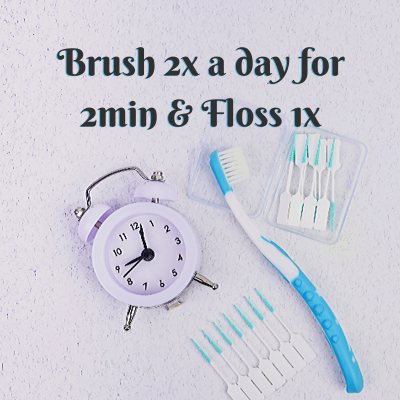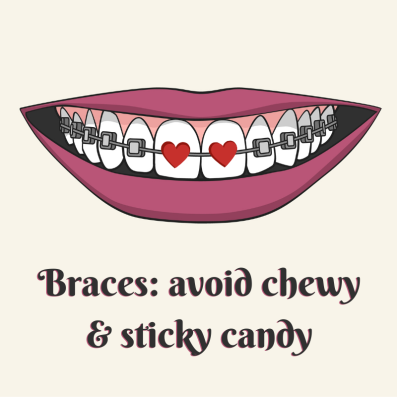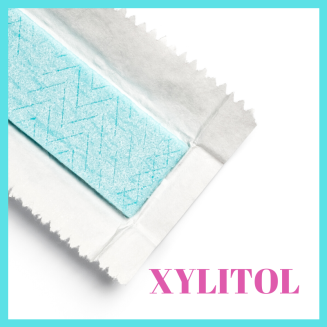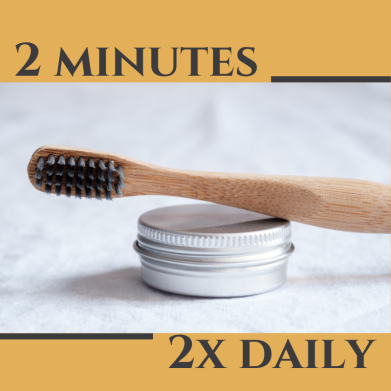Never in my lifetime did I think I would be experiencing a worldwide pandemic! The stories we once read in our history books, will now have a new chapter that WE are experiencing. Tensions are high and patience is low. But remember, your children, partner, and even pets, are all feeling and going through this change and new lifestyle. So even though it is really easy to focus solely on our own internal feelings, you aren’t alone. Which is even MORE of a reason to establish a daily routine, for everyone. Starting NOW!
SLEEP
Sleep management is as important, right now, as it was before this pandemic (maybe  even more so). Try and stick to your normally occurring schedule. If you normally woke up at 6:00am and started getting ready for bed around 10:00pm – continue to do so. Keeping a consistent sleep schedule will keep your body in balance. At least as much as possible. Everyone’s system is different, and sleep cycles for that matter. But make a solid effort to get your full 8 hours, it is crucial. If this is where you struggle, make it simple! Set an alarm. Set one for when you need to wake up in the morning to get yourself going and set another to let you know it’s time to winddown. Then for those of us that need it, set another to turn off all electronics and really focusing on clearing your mind and falling asleep.
even more so). Try and stick to your normally occurring schedule. If you normally woke up at 6:00am and started getting ready for bed around 10:00pm – continue to do so. Keeping a consistent sleep schedule will keep your body in balance. At least as much as possible. Everyone’s system is different, and sleep cycles for that matter. But make a solid effort to get your full 8 hours, it is crucial. If this is where you struggle, make it simple! Set an alarm. Set one for when you need to wake up in the morning to get yourself going and set another to let you know it’s time to winddown. Then for those of us that need it, set another to turn off all electronics and really focusing on clearing your mind and falling asleep.
When the world straightens itself back out, your body will thank you. It can be rough to retrain yourself into a “morning person” again. It starts by giving yourself the time in the morning to shower, dress, and mentally prepare to work – or study, or clean out that one closet again.
GET UP AND MOVE AROUND
Everyone’s favorite topic – exercise! Now when I say exercise, I am not saying to get yourself a home gym and work your body into a frenzy. This is more of a “get your body moving” type of thing. When it’s cool out, go for a nice walk with your kid (fur babies included). Or even just by yourself if that works for you. The fresh air is always a good thing, a little vitamin-D, sunshine, and some quiet time for yourself. You’ll get a nice little jaunt, some family bonding time, and a boost to your mental peacefulness.
If you are working from home on a computer, be sure to take your breaks. Whether it is a 10-minute break or your lunchtime, make an effort to mentally clock out as well. Put your phone down and step away from your workstation altogether. You need to be distraction-free and able to clear your mind, even for a short while. Find something that makes you happy. Something that washes a sense of calm over you while you are doing it. Something such as painting? Crocheting? Reading? Whatever it may be and make that your “happy place”. Don’t make it a last resort. Run to it whenever you find stress creeping in.
HYGIENE
Consider this one an unspoken “must”. At some point, we have all pushed our personal hygiene aside here and there. Aim to give yourself enough time to shower either before starting your day or before bed. Not only is it hygienically sound, but it makes you feel better! If you find yourself not really caring what you look like, that’s a good warning sign to step back into the habit of bathing daily. Again – this is not a good rut to be in. When you maintain your hygiene, not just showering, but grooming, brushing your hair, flossing and brushing your teeth, and changing into fresh clothes (even if they are pajamas!). There is a different feeling you get by doing these things compared to just basking in your own aroma. Not to mention, there can be some health-related issues by going too long without taking care of yourself.
HEALTH including Mental Health
Your physical health is one thing, but now I am talking ALL around health, and this includes your mental health. Do not push this to the side, wistfully promising you will deal with it later. Keep tabs on how you are feeling and be honest with yourself. If you are fearful of medical offices right now, there are plenty of great resources online to reach out to. Shoot your primary care physician an email. Avoid excuses. If something is going on, mentally, a scab that won’t heal, an irregular spot on your skin, get help from a professional. AND – if you are taking daily medications, keep yourself on track. Keep a schedule of daily habits and be sure to set alarms to support you.
EATING
When you are busy and, on the go, it’s easy to just swing through a drive-thru. Then eat as fast as humanly possible all while you are in the car zipping to your next adventure in life. Convenience seems to be our way of life. However, with the pandemic, this is the perfect time to get your eating schedule in check. How do you get structure? It starts with researching healthier at-home options. Then making your grocery list and meal prepping. We find ourselves moving at a slower pace, so plan your meals, and even your snacks. Now is your chance to track what you’ve been consuming daily. See your habits in all their glory and get clear on what you want to change. Give it a go! And, if the grocery store offers too much temptation, try online ordering! 😉
as fast as humanly possible all while you are in the car zipping to your next adventure in life. Convenience seems to be our way of life. However, with the pandemic, this is the perfect time to get your eating schedule in check. How do you get structure? It starts with researching healthier at-home options. Then making your grocery list and meal prepping. We find ourselves moving at a slower pace, so plan your meals, and even your snacks. Now is your chance to track what you’ve been consuming daily. See your habits in all their glory and get clear on what you want to change. Give it a go! And, if the grocery store offers too much temptation, try online ordering! 😉
If your mind starts drifting back into a rut, snap it back to attention by reminding yourself, you are not alone. This is new for everyone. It can be scary, it can be depressing, and it is just another wave passing for fear of the unknown. We are all going through this together, different paces and a roller coaster of ever-changing emotions. Hang in there. There will be an end to all of this. We are all learning as we go. We WILL get to the light at the other side. Hopefully, happier, healthier and with a wealth of new knowledge. Be optimistic by being mindful of your thoughts, stay positive by being mindful of what you say, be kind to yourself and others, be well by analyzing and creating your routines!
Dr. Thomas Hoover, Dr. Neil Covin, and Dr. Satya Molleti
3401 Wooddale Avenue South
St. Louis Park, MN 55416
Phone: (952) 920-9209








 Floss can come waxed or unwaxed and everyone can use it! It’s great to get those food particles in tight spaces. Typically, it comes rolled up in a small plastic box. Which makes flossing on the go much easier!
Floss can come waxed or unwaxed and everyone can use it! It’s great to get those food particles in tight spaces. Typically, it comes rolled up in a small plastic box. Which makes flossing on the go much easier! Water Flosser: The water flosser is a different type of device known as an oral irrigator. Instead of manually scraping the plaque off, the water pressure does it for you! If you have braces it’s an easy way to make sure you are fully cleaning those pearly whites, however, anyone can use a water flosser.
Water Flosser: The water flosser is a different type of device known as an oral irrigator. Instead of manually scraping the plaque off, the water pressure does it for you! If you have braces it’s an easy way to make sure you are fully cleaning those pearly whites, however, anyone can use a water flosser.






 This is the perfect stocking stuffer for all ages. Toothbrushes come in all types of fun options, which makes them easy to toss in. Soft-bristle toothbrushes are the best because hard bristles can damage your teeth. You can even add some fun by personalizing with stickers!
This is the perfect stocking stuffer for all ages. Toothbrushes come in all types of fun options, which makes them easy to toss in. Soft-bristle toothbrushes are the best because hard bristles can damage your teeth. You can even add some fun by personalizing with stickers! Gum sweetened with Xylitol: It’s hard to come across someone who doesn’t enjoy chewing gum. However, most gum has an insane amount of sugar per piece and all that sugar does a lot of damage. Sugar in our mouths is dissolved by the bad bacteria which causes excess plaque to build up and cavities. Chew gum sweetened with Xylitol. Xylitol is as equal in sweetness as sugar and it has a similar flavor, it also fights cavities while you chew!
Gum sweetened with Xylitol: It’s hard to come across someone who doesn’t enjoy chewing gum. However, most gum has an insane amount of sugar per piece and all that sugar does a lot of damage. Sugar in our mouths is dissolved by the bad bacteria which causes excess plaque to build up and cavities. Chew gum sweetened with Xylitol. Xylitol is as equal in sweetness as sugar and it has a similar flavor, it also fights cavities while you chew!
 Brush your teeth twice a day: This is crucial for keeping your teeth thankful as well as intact. When you go to bed without
Brush your teeth twice a day: This is crucial for keeping your teeth thankful as well as intact. When you go to bed without 

 Hard candy sits in your mouth slowly coating your teeth in sugar and can crack or break teeth as you chew them. The sour candies are super acidic and break down the enamel, weakening your teeth and making them more susceptible to cavities. Treats like popcorn balls have sharp kernels that can cause bleeding gums and other painful sores in your mouth.
Hard candy sits in your mouth slowly coating your teeth in sugar and can crack or break teeth as you chew them. The sour candies are super acidic and break down the enamel, weakening your teeth and making them more susceptible to cavities. Treats like popcorn balls have sharp kernels that can cause bleeding gums and other painful sores in your mouth. This process is called demineralization, luckily our saliva is a base, so it helps prevent and restore some of the damage done in a process called remineralization.
This process is called demineralization, luckily our saliva is a base, so it helps prevent and restore some of the damage done in a process called remineralization.
 Signs you can look for include: swelling and/or redness of the gums (healthy gums should be tight and pink), as well as easy bleeding while brushing or flossing. Left untreated, the problem will worsen as your gums recede, creating pockets for more build-up to nest inside. The chain continues: the build-up’s connected to the infection of gums, and the infection of the gums is connected to the destruction of the bone structure and the removal of your teeth.
Signs you can look for include: swelling and/or redness of the gums (healthy gums should be tight and pink), as well as easy bleeding while brushing or flossing. Left untreated, the problem will worsen as your gums recede, creating pockets for more build-up to nest inside. The chain continues: the build-up’s connected to the infection of gums, and the infection of the gums is connected to the destruction of the bone structure and the removal of your teeth.